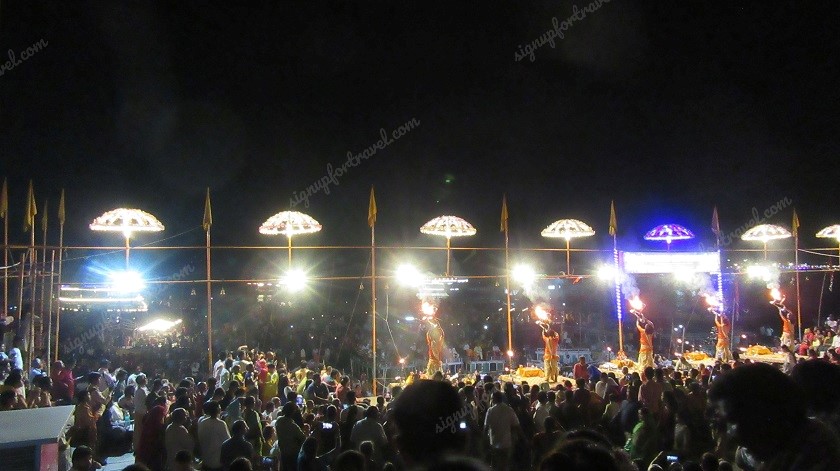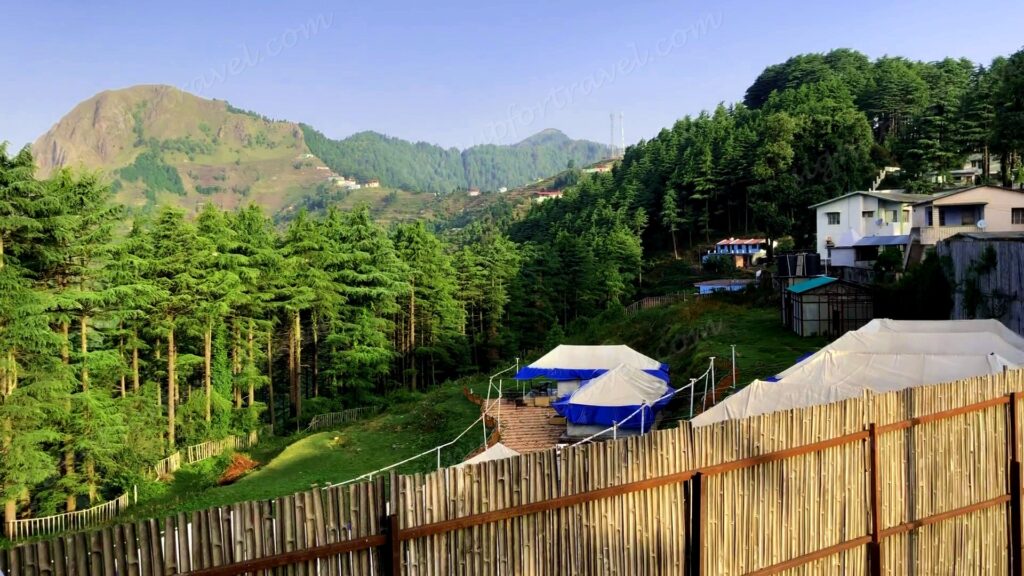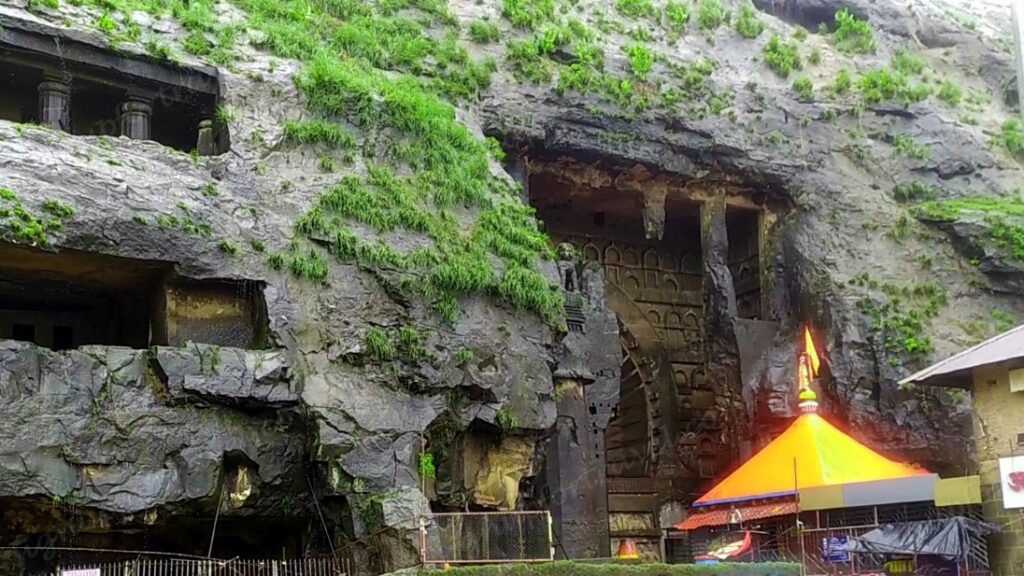- The alleys near Kashi Vishwanath Temple
- Sampling "Lassi" at the "Blue Lassi" shop
- The truth of life at Manikarnika Ghat
- Beyond Manikarnika Ghat
- Encounter with a big crowd at Dashashwamedh Ghat
- Birth anniversary celebrations of River Ganga
- Ganga Aarti begins
- An elegant performance
- A simple dinner and wrap up of the day
- Link to YouTube video
The alleys near Kashi Vishwanath Temple
A short distance from the temple is the famous Manikarnika Ghat, one of the holiest cremation places for Hindus. Also popular as “Maha Shamshan”, which literally translates to “Great cremation place”. It is easily accessible from the back gate of Kashi Vishwanath Temple. Since we had kept our footwear at Gate No. 4, we took the long route through the alleys.
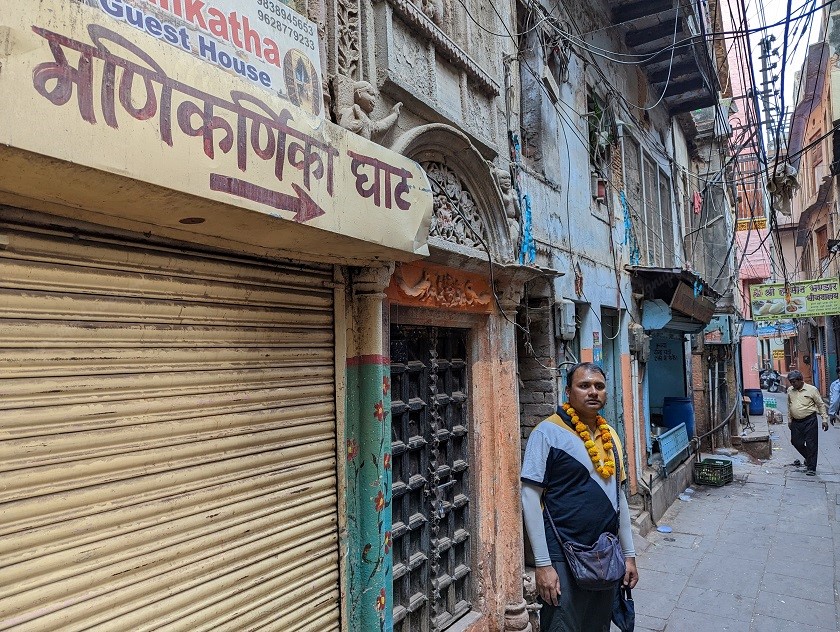
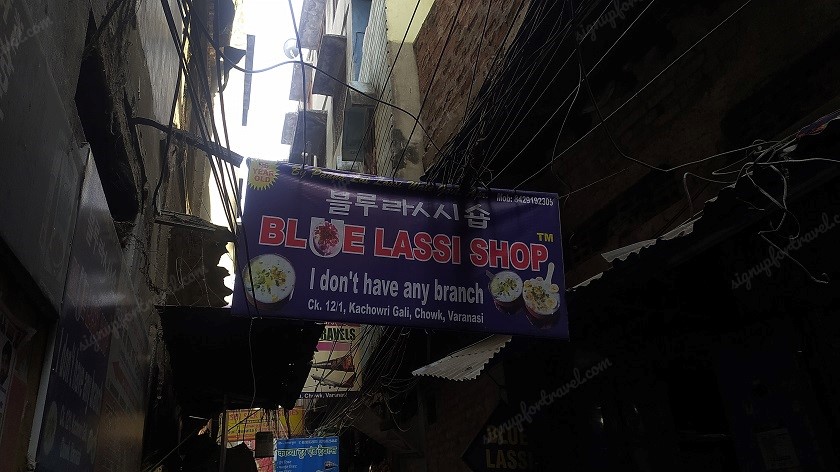
Sampling “Lassi” at the “Blue Lassi” shop
Our next stop was at the “Blue Lassi” shop en route to Manikarnika Ghat. You will find almost a hundred variants/flavours of the humble lassi. Highly recommended by our AirBnb host, we ordered a strawberry flavoured lassi, which was good but a bit costly at INR 90 per serving. To be honest, we found it a bit underwhelming, maybe walking in with very high expectations did not help. It is one out of the four delicacies of Varanasi, others being “Banarasi Paan” , “Kachori” and sweetmeats.
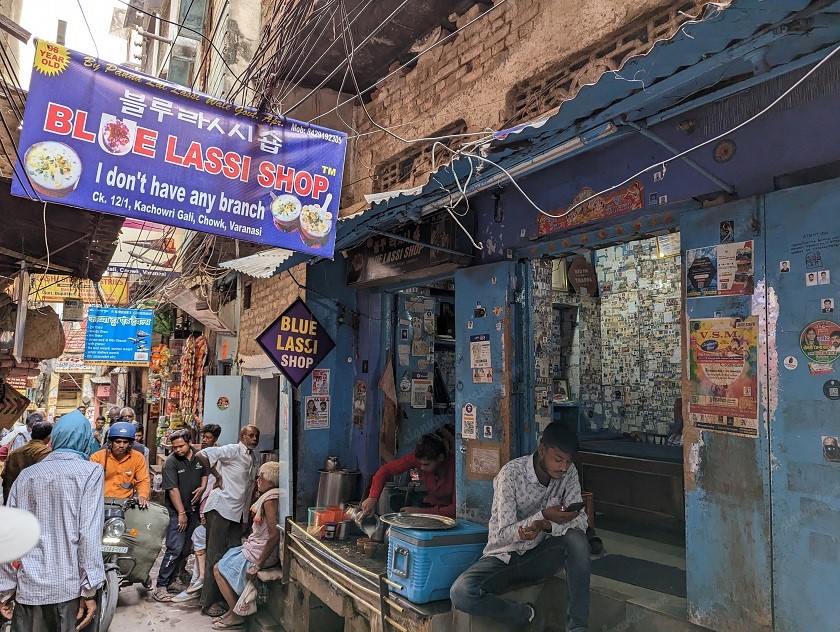
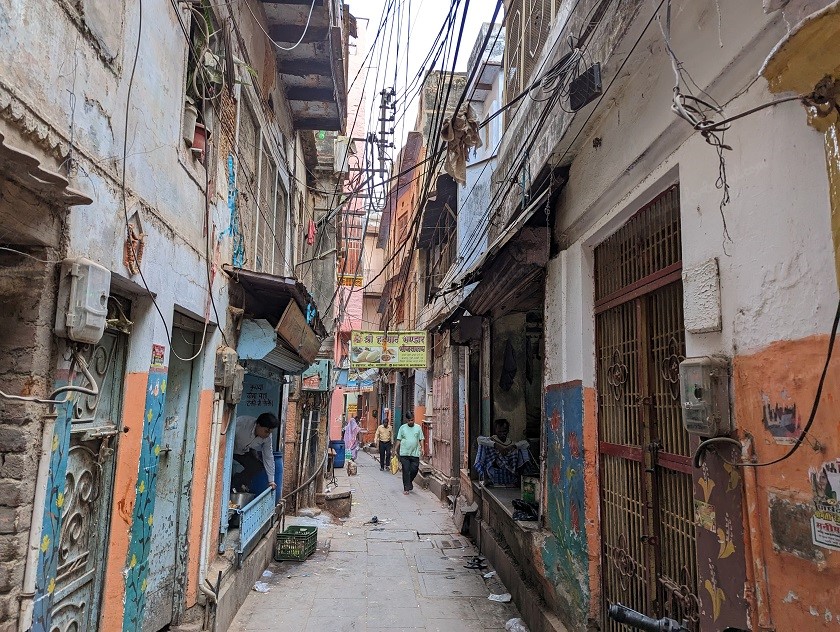
The chanting of “Ram naam satya hai”, which means that the name of Lord Rama is the ultimate truth, echoed frequently in the alleys as funeral parties passed by for the last rites. Giving way to a few such parties, we continued our walk towards the ghat.
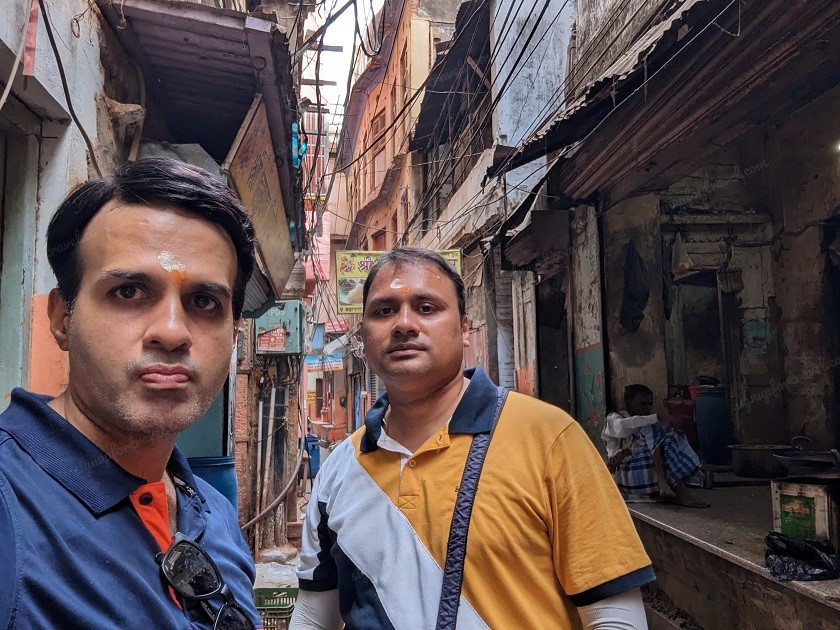
The truth of life at Manikarnika Ghat
As we got closer, we got whiffs of the smoke from the numerous funeral pyres. If you are allergic to smoke or feel nauseated by the very thought of being in such places, we would advise you to give it a miss. To avoid all kinds of ugly situations that may arise, please avoid taking pictures or videos of the ghat (especially when a cremation is taking place).
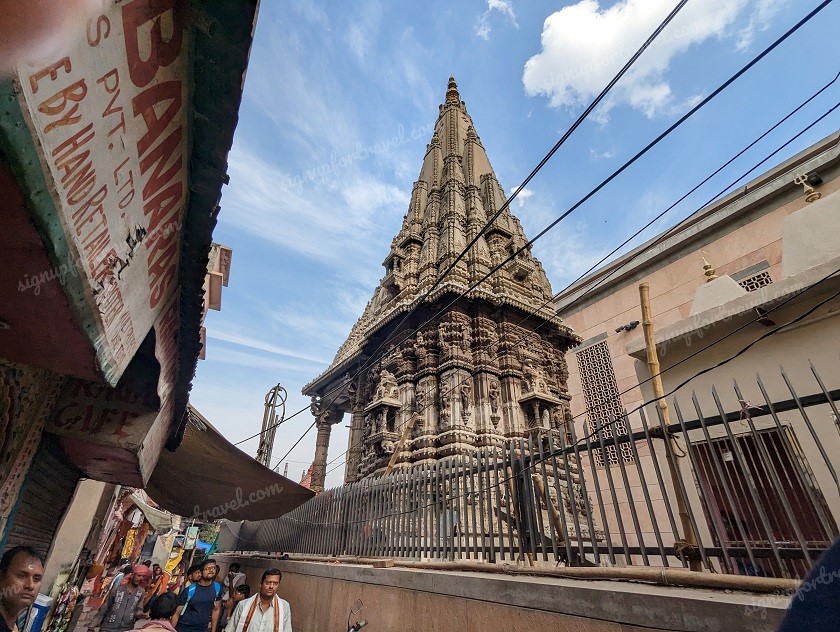
Just before entering the ghat we saw huge quantities of wood stocked at the shops. These shops sell the wood by weight to fuel the pyres. We had encountered similar sights near ‘Harishchandra Ghat’, another cremation ground near Sonarpura Chowk, earlier in the day.
There were funeral pyres at the ghat that we could see from a short distance. But due to the general feeling of gloom and doom in our minds, we did not linger there for more than five minutes. The place reminds one of the fleeting nature of life and the ultimate truth of life which is ‘death’.
Beyond Manikarnika Ghat
Near Manikarnika Ghat is a holy “Kund” (well). As per belief, Goddess Parvati had dropped her earring at that place and in order to retrieve it, Shiva scooped out the earth, creating the well in the process.
The time was around 4.30 pm when we were loitering at Ganga Mahal Ghat, which is a little ahead of Manikarnika Ghat . These ghats have an old world charm to it. With beautiful palace fronts and verandas built on the top edges of massive walls rising high from the water level, the sights are incredible. We sat down on one of the benches to soak in the atmosphere but it was so damn hot that our pants were soon on fire and we decided to not to take it any further.
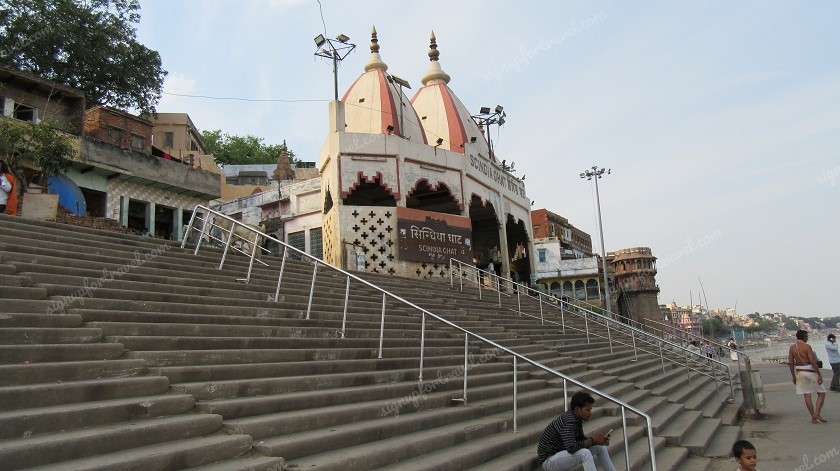
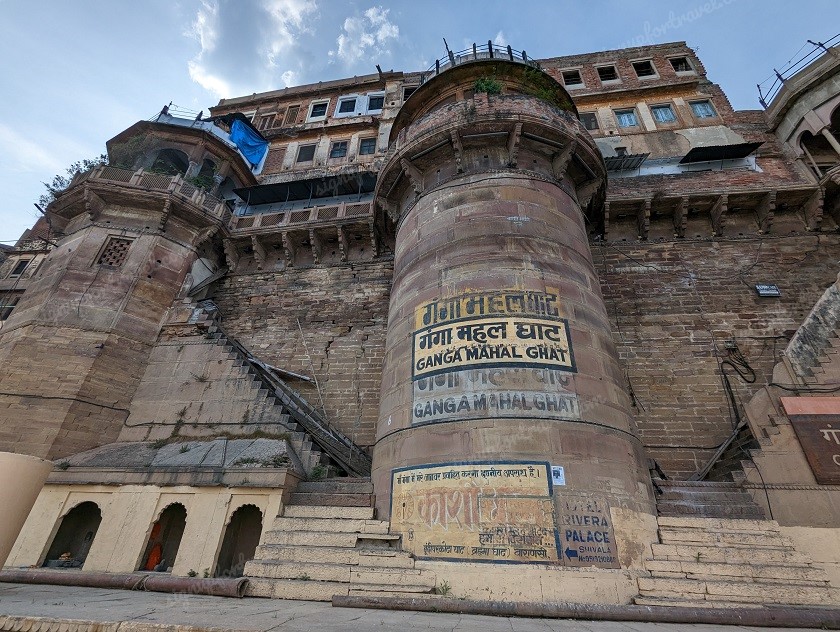
Numerous temples dot the ghats including one near the water line known as ‘Ratneshwar Mahadev Temple’, which remains submerged during monsoons. The temples of Varanasi have a unique architecture not found anywhere else.
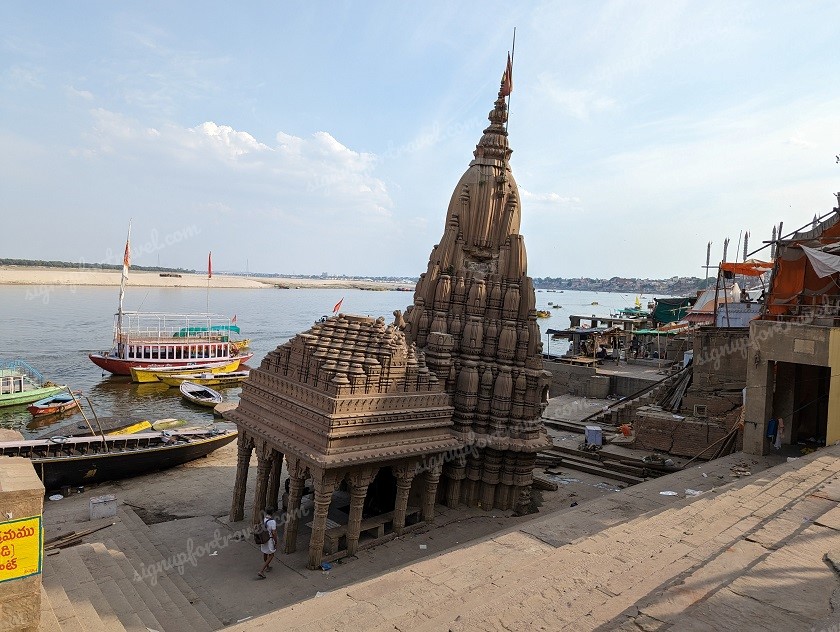
We felt pestered by the ludicrous offers made by a few people for a boat ride and decided to head towards Dashashwamedh Ghat. The glorious “Ganga Aarti ” performance takes place at that ghat around 6.30 pm each day and we had to occupy seats before that time. But first, we had to collect our hat that one of us had unintentionally left at ‘Blue Lassi’ shop.
Encounter with a big crowd at Dashashwamedh Ghat
A substantial crowd had already formed at Dashashwamedh Ghat by the time we reached. As the best places were already occupied, we did not bother to look for any immediately. Instead, we soaked up the scenic view of the river and its numerous ghats and walked around casually. The atmosphere had turned much cooler now that the sun was setting.
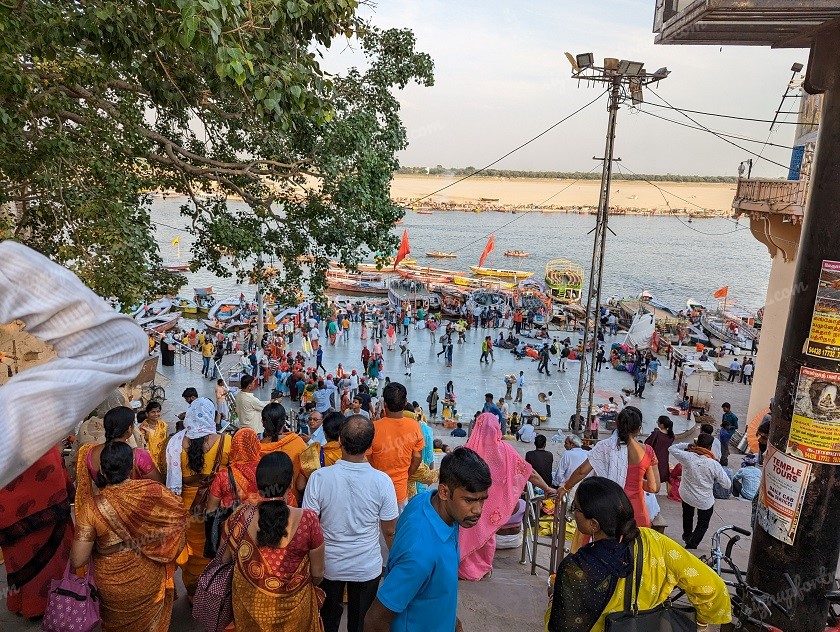
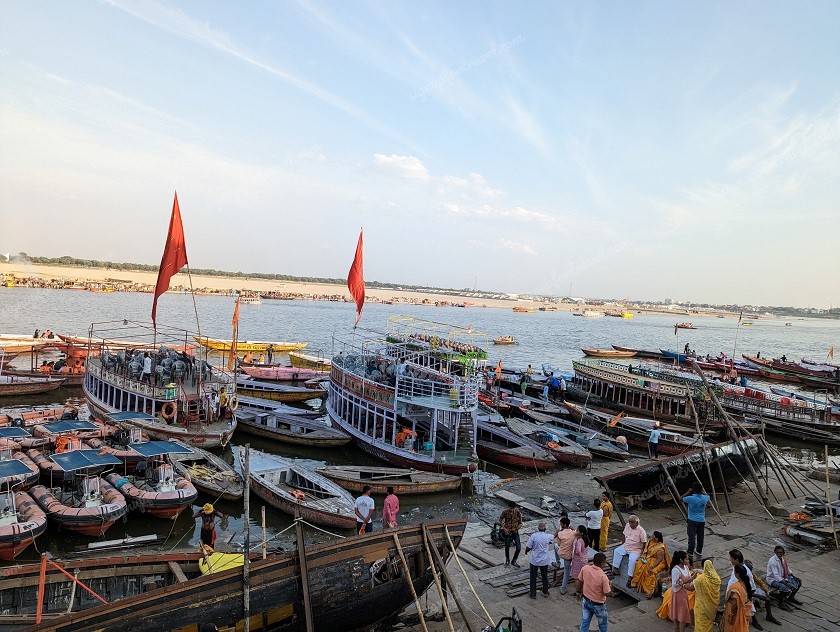
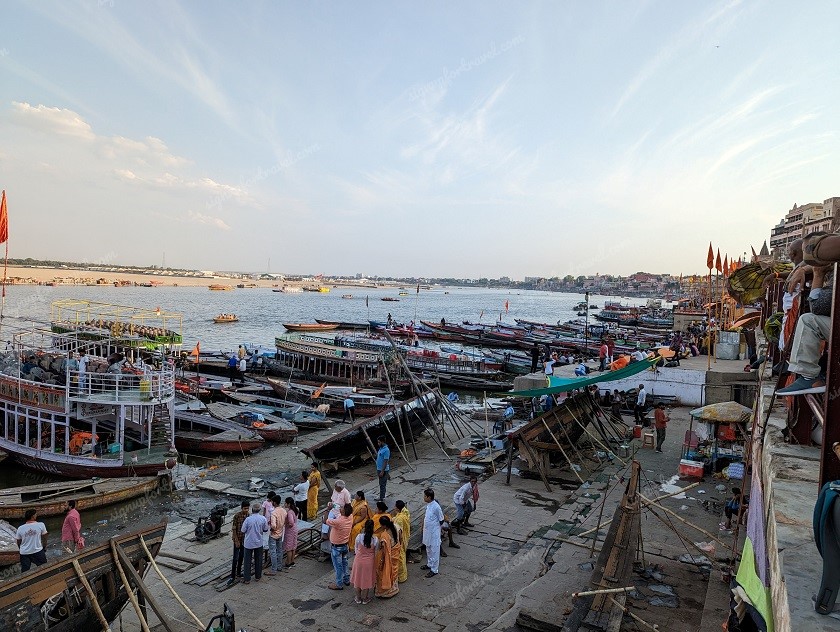
However, there was no wind at all and it seemed stuffy. We were not the only ones enjoying the beauty of the river. Hordes of devotees from South India had descended upon the city for “Pushkaralu” and a good percentage of them were present there for the aarti.
Finally, it was time to find a good spot to see the performance. Luckily we could find two vacant spots on the steps of the ghat. Now we just had to sit and wait on the hard surface. It was kind of a never ending wait.
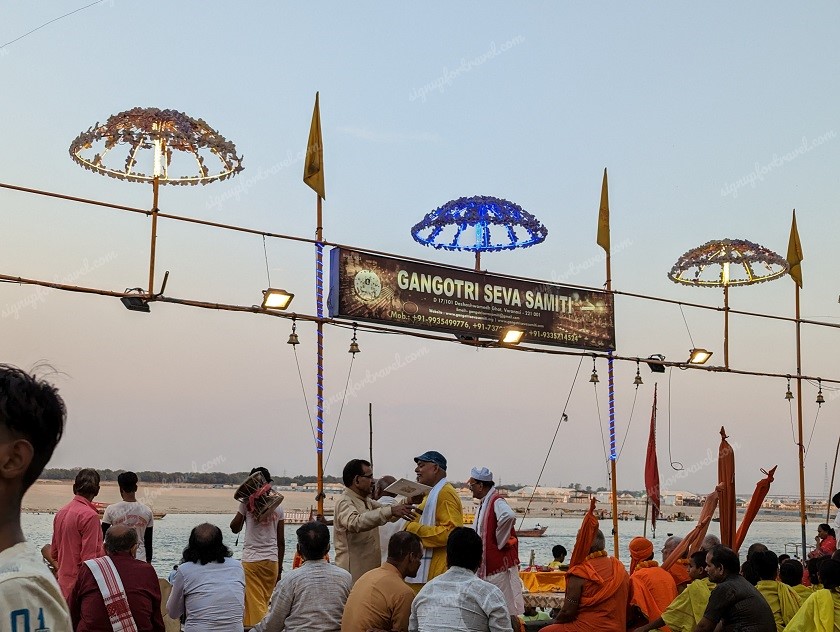
Birth anniversary celebrations of River Ganga
There were numerous activities taking place in preparation for the “Ganga Aarti”. That very day was also an auspicious day of Ganga Saptami, being the birthday of River Ganges.
Key persons from various temples and mutts had gathered for the celebrations. They offered prayers and dedicated appreciation for the river in their speeches. The institutions had donated sacred cloth and garland that measured the entire width of the river. We could see a boat making its way to the other bank of the river and adorning it by submerging these offerings as it crossed the entire width.
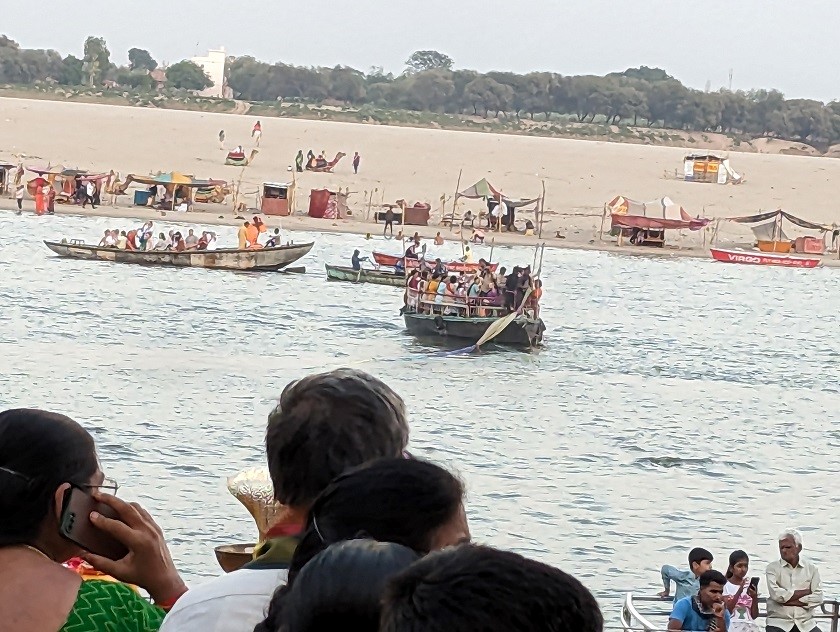
Ganga Aarti begins
The aarti performance, in essence, is a ritualistic worship of the River Ganges and takes place on various ghats in Varanasi. But the one at Dashashwamedh Ghat is the most important. It is so partly due to the patronage of important people as well as due to the history attached to it. A popular belief suggests that Lord Brahma performed the “Ashwamedha yajna” at this place by sacrificing “dash” (ten) horses. As per another, Lord Brahma welcomed Lord Shiva to Varanasi at this place.
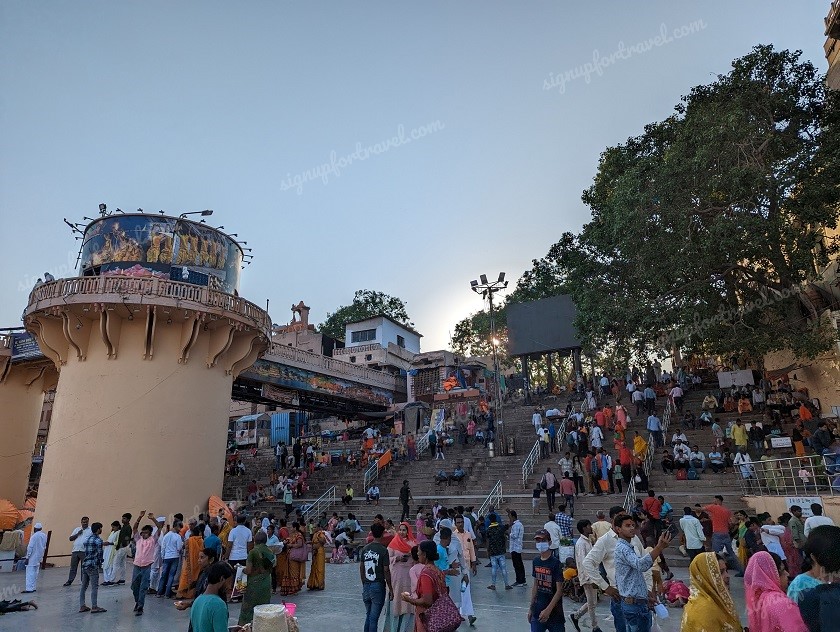
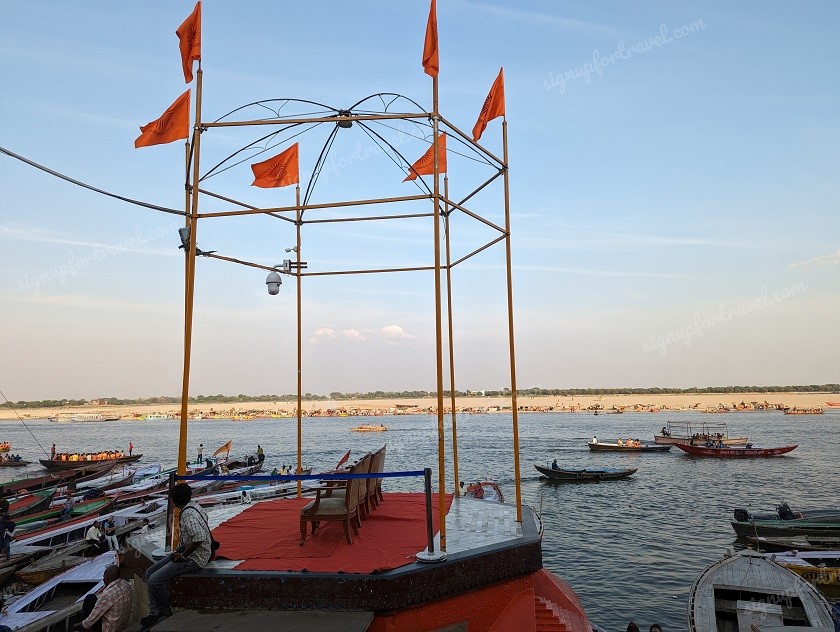
Finally, the sound of musical instruments and chanting heralded the start of aarti.
An elegant performance
In the first phase, priests recited prayers in unison. Thereafter, they spaced out and began the elaborate aarti performance. One after the other, different kinds of incense was offered to deity Ganga followed by 51 lamps arranged on a single stand, one for each of the Gods and Goddesses of the sub-continent.
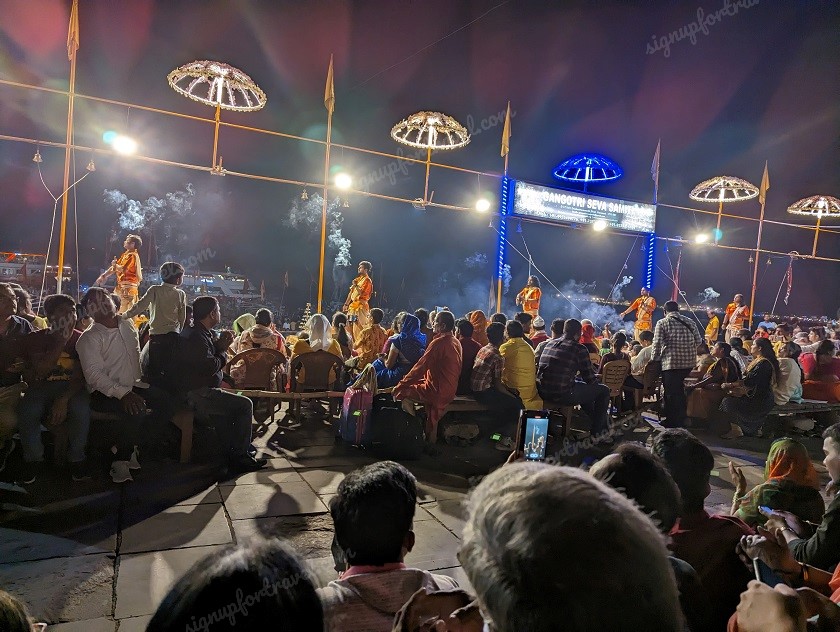
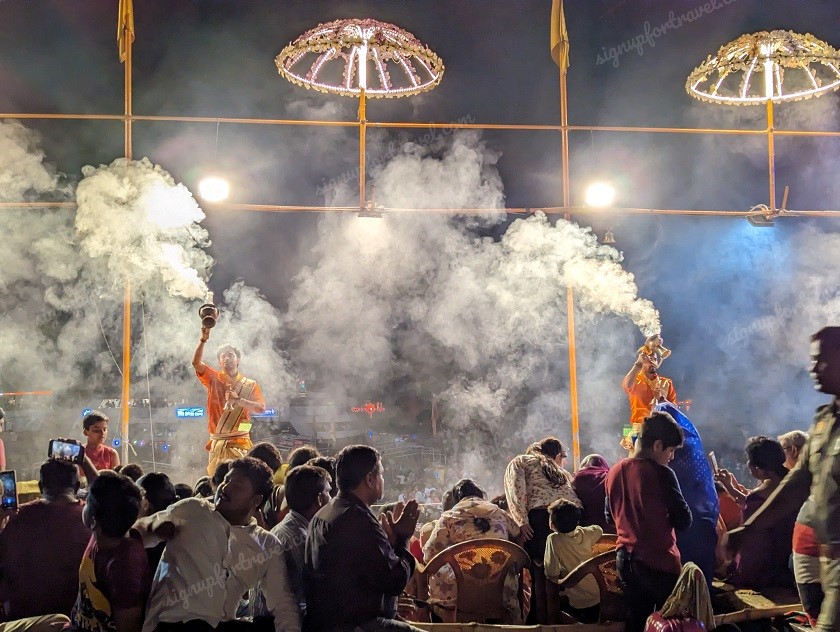
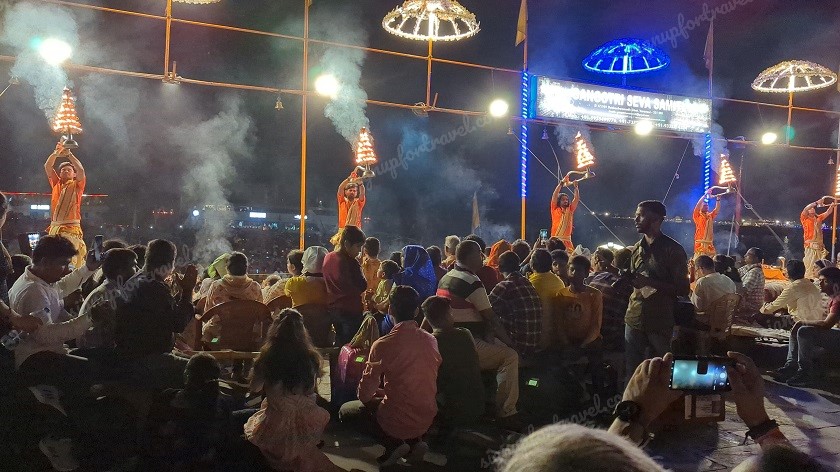
The last lamp with a huge flame is understood to be an offering to Lord Shiva . The aarti combines elements of a graceful dance with the Vedic chants. The priests, dressed in elegant ritualistic attire faced the river for the entire performance.
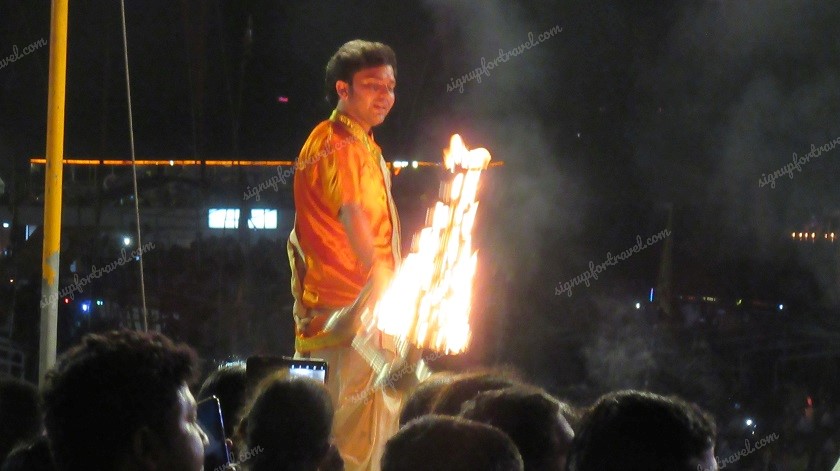
As a consequence, the boats that had gathered near the ghat provided their passengers the best view of the aarti.
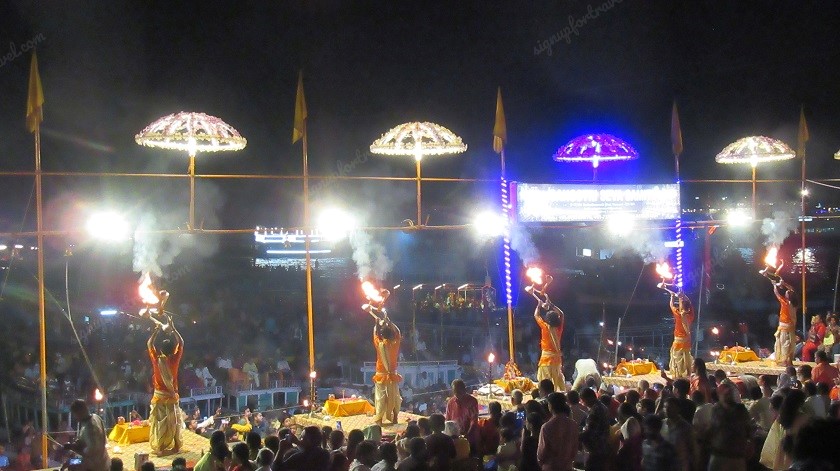
Only briefly had the priests turned towards the audience seated at the ghat. It is noteworthy that there is no ticket requirement for the aarti.
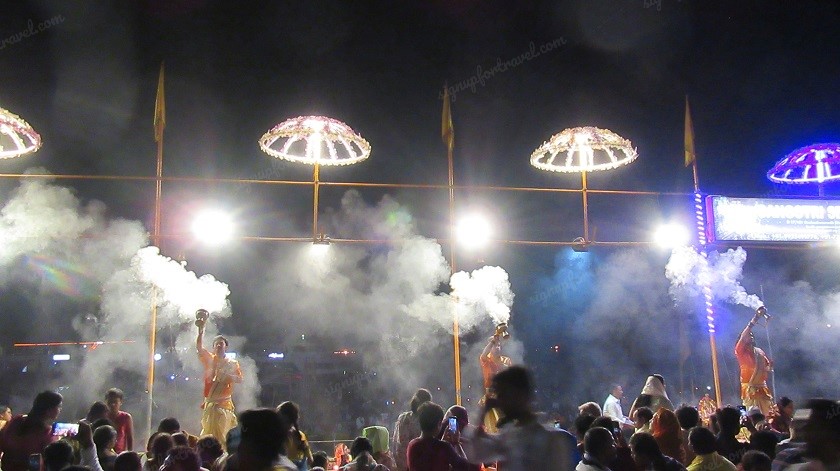
A simple dinner and wrap up of the day
The duration of aarti must have been close to an hour. With our sore backs, we made our way through the dispersing crowd and headed towards Prasadam Restaurant near “Godowlia” chowk. Dosas and Idlis constituted the dinner for the day.
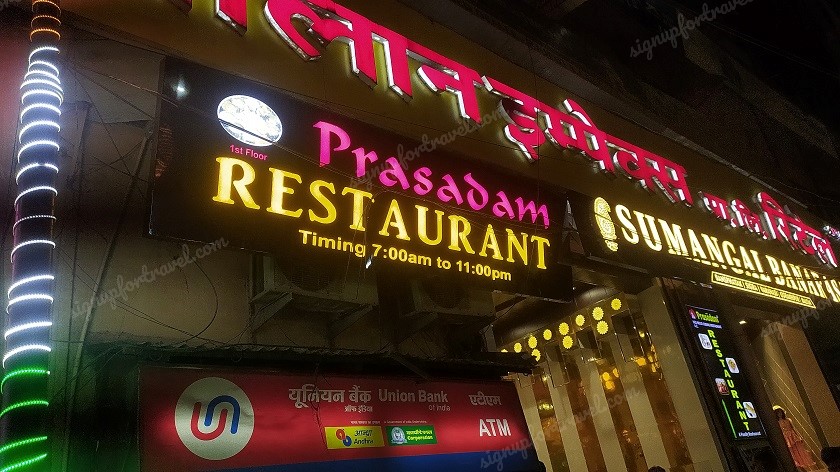
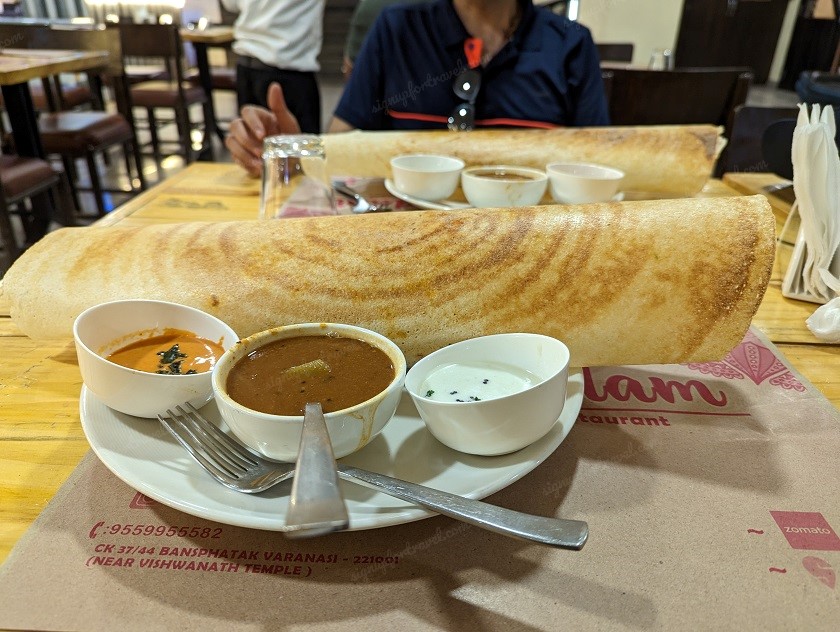
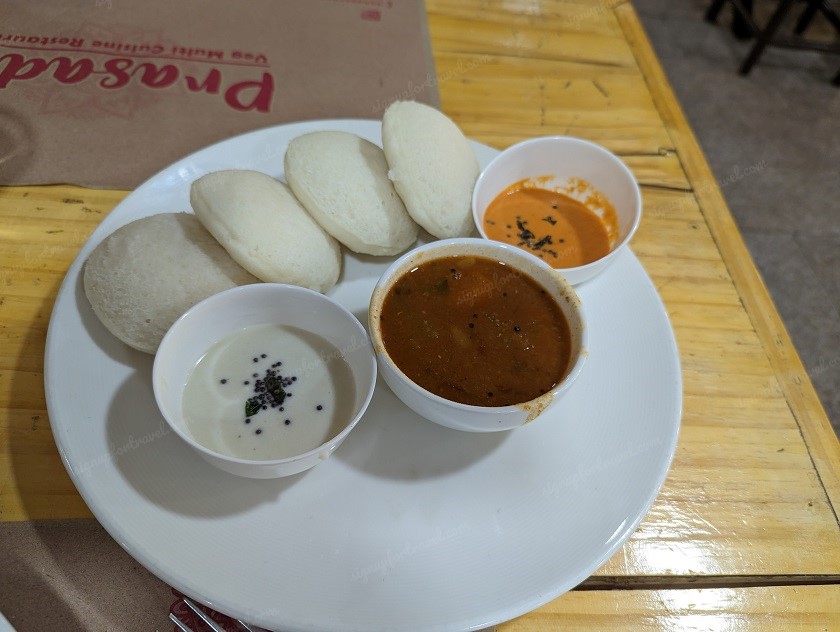
It was almost 9 PM when we finished our dinner and headed back to our place of stay. Just come to think of it, we headed out only at 1 PM and in just 8 hours we had experienced so much. When we reflected on the day back at our room, it was hard to believe that so much happened in just a few hours, it was as if we had been transported to a different dimension, such is the magic of the place. We thanked Lord Shiva for his blessings and giving us an opportunity to visit this place.
The next day was going to be another of great significance (Sarnath), we briefly discussed it as we wrapped up a phenomenal day.

